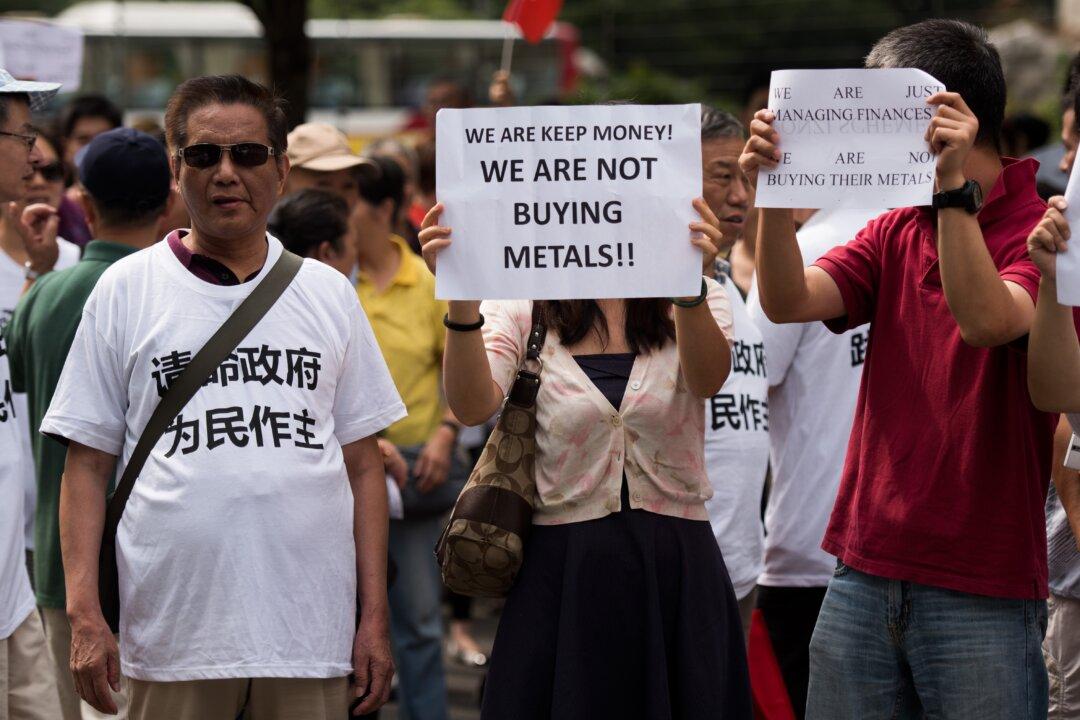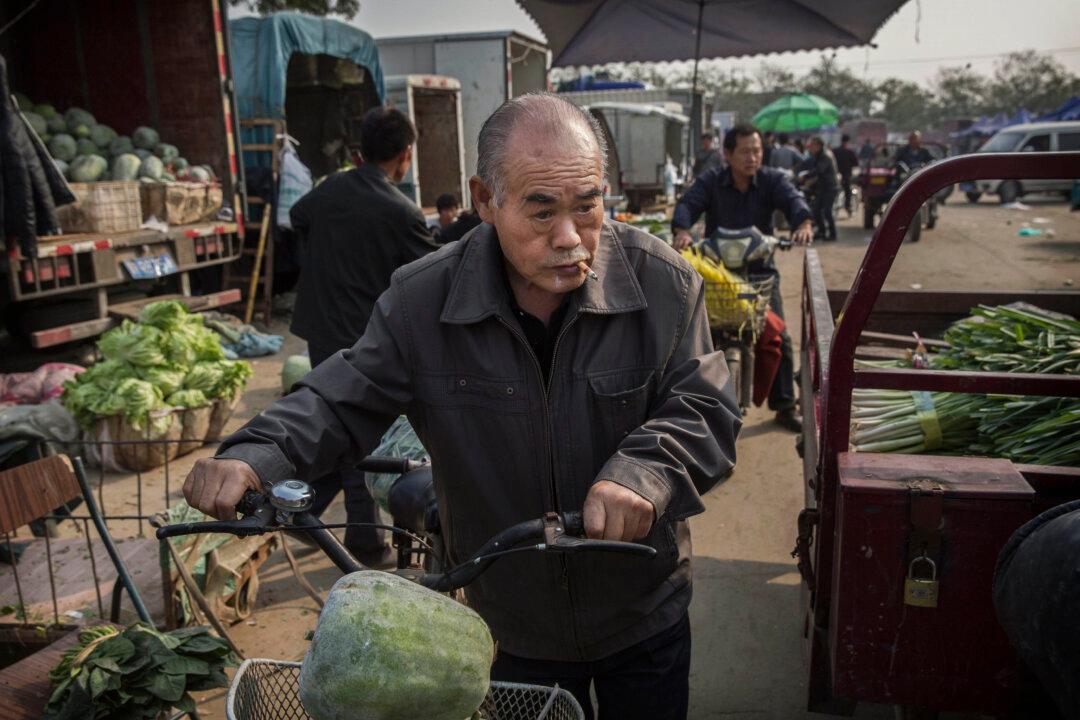Hundreds of protesters gathered in Beijing and Shanghai last week, demanding authorities investigate and prosecute a nonferrous metals exchange accused of running a multibillion-dollar fraud.
The protests elicited nary a response from the China Securities Regulatory Commission (CSRC), and protesters were dispersed by police several hours later.
Such protests could soon become commonplace. There is increasing discontent among Chinese investors with alternative and speculative asset exposure, who have little hope for government intervention unlike those invested in public stock markets.
The target of the protesters’ ire is Fanya Metal Exchange, an exchange of minor and rare earth metals in the southwestern city of Kunming, Yunnan Province. The exchange is authorized and regulated by the local government, and deals in 14 rare nonferrous metals including indium, bismuth, antimony, and terbium.
Fanya markets financial products called “ri jin bao,” with fixed returns of up to 13.7 percent and guaranteed principal. According to financial news website Caixin, Fanya had stopped investor withdraws in July, freezing assets worth approximately 43 billion yuan ($6.7 billion) from 220,000 investors.
The demonstrators called Fanya a Ponzi scheme.
Rare Metals
The exchange claims it allows investors to lend to metals traders using the metals as collateral—the same metals the traders are paying Fanya to store as a custodian. In theory, this works for most commodities and metals that are frequently traded.
But one look at Fanya’s business model raises obvious questions.
The metals Fanya deals are rarely produced and used. Indium is a byproduct of zinc ore, and is used in small quantities in the production of LCD screens. Fanya stores more than 3,400 (3,740 tons) metric tons of indium, which is more than the amount of indium needed globally for several years combined.
It’s also hard to fathom who would hire Fanya to store such high amounts of minor metals, let alone pay the exchange enough to cover 13.7 percent interest plus spread. At such quantities, Fanya doesn’t have a market for indium and its inventory (and investors’ collateral) is completely illiquid. Even assuming its revenues are legitimate, any sizable withdrawal request would instantly trigger a liquidity crisis.
The only logical way for Fanya to pay its interest rate and guarantee investor principal is to use money from new investors to pay off existing ones—effectively a Ponzi scheme.
Questionable Returns
Some protesters last week said they racked up bank loans and credit card debt to purchase more than 1 million yuan worth of “ri jin bao” from Fanya.
What drove hundreds of thousands of investors to sink their life savings into products linked to obscure metals?





